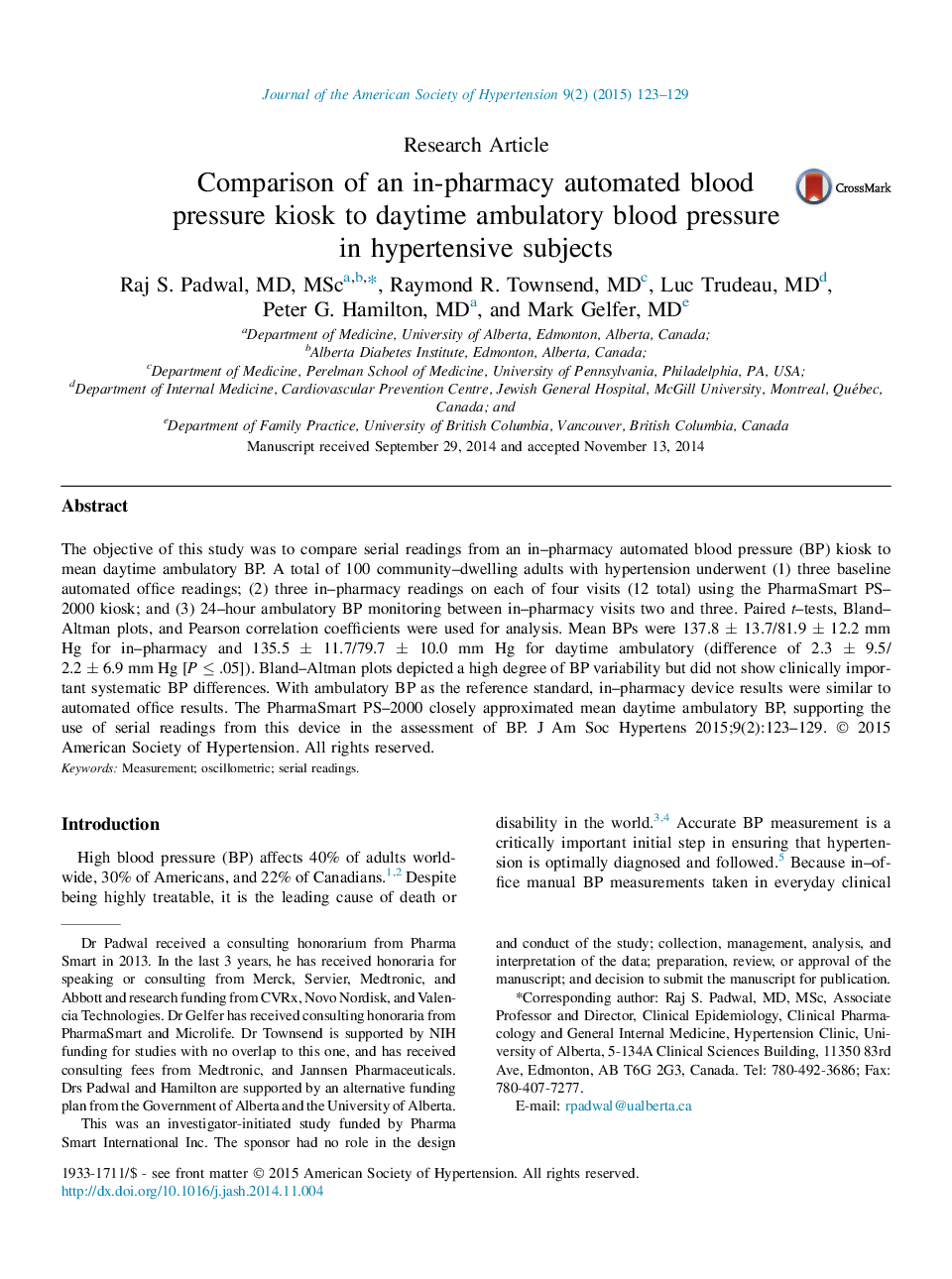| Article ID | Journal | Published Year | Pages | File Type |
|---|---|---|---|---|
| 2956547 | Journal of the American Society of Hypertension | 2015 | 7 Pages |
•We compared serial BP readings from the PharmaSmart PS-2000 device to mean daytime ambulatory BP.•The mean of 12 in-pharmacy device readings was within 3 mm Hg of mean daytime ambulatory BP.•Variance around the mean was relatively high but comparable to automated office BP.•Overall, these results support the use of serial readings from the PS-2000 for assessing BP.•When making therapy decisions, confirmation by home or ambulatory BP is recommended.
The objective of this study was to compare serial readings from an in–pharmacy automated blood pressure (BP) kiosk to mean daytime ambulatory BP. A total of 100 community–dwelling adults with hypertension underwent (1) three baseline automated office readings; (2) three in–pharmacy readings on each of four visits (12 total) using the PharmaSmart PS–2000 kiosk; and (3) 24–hour ambulatory BP monitoring between in–pharmacy visits two and three. Paired t–tests, Bland–Altman plots, and Pearson correlation coefficients were used for analysis. Mean BPs were 137.8 ± 13.7/81.9 ± 12.2 mm Hg for in–pharmacy and 135.5 ± 11.7/79.7 ± 10.0 mm Hg for daytime ambulatory (difference of 2.3 ± 9.5/2.2 ± 6.9 mm Hg [P ≤ .05]). Bland–Altman plots depicted a high degree of BP variability but did not show clinically important systematic BP differences. With ambulatory BP as the reference standard, in–pharmacy device results were similar to automated office results. The PharmaSmart PS–2000 closely approximated mean daytime ambulatory BP, supporting the use of serial readings from this device in the assessment of BP.
